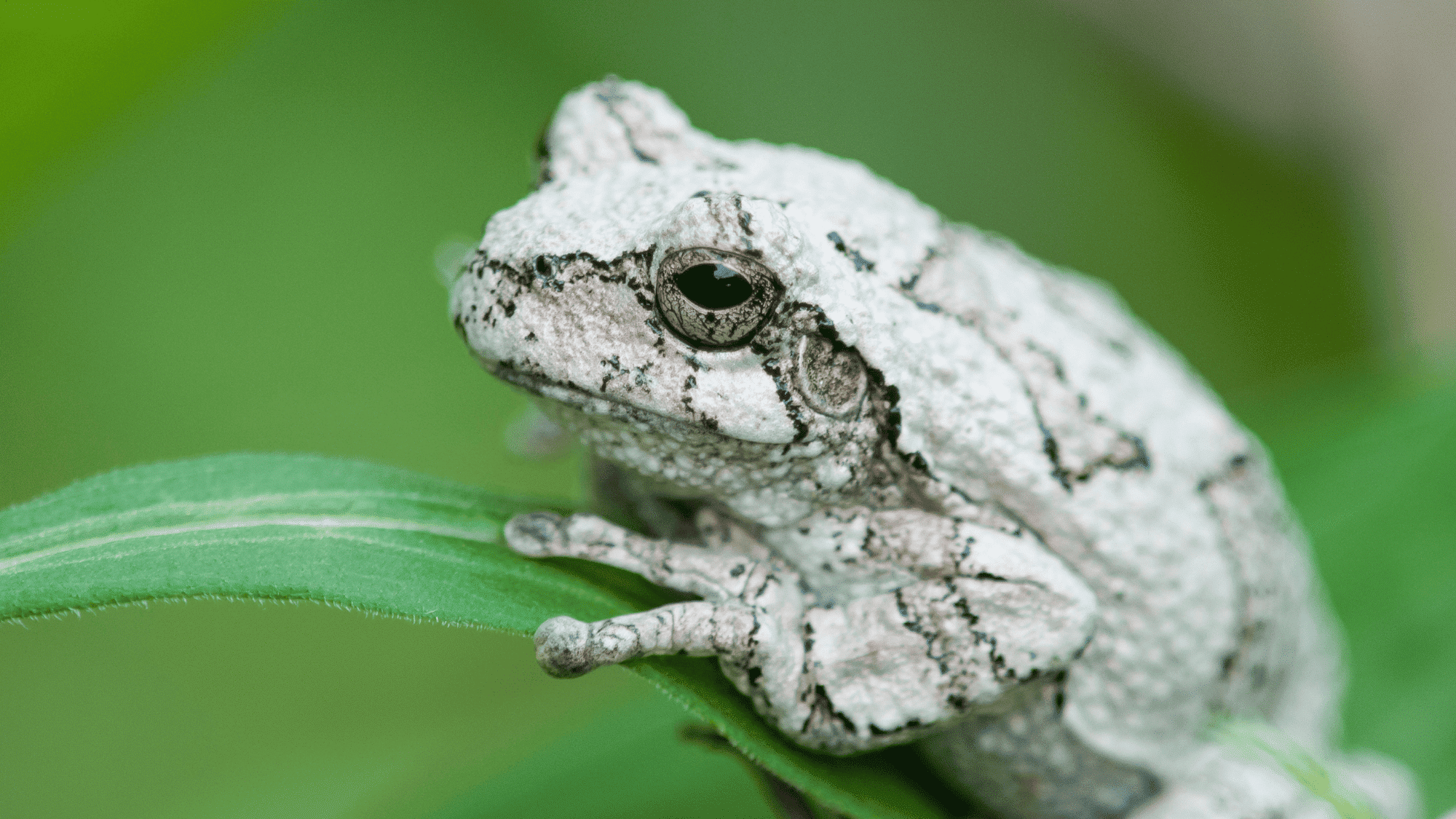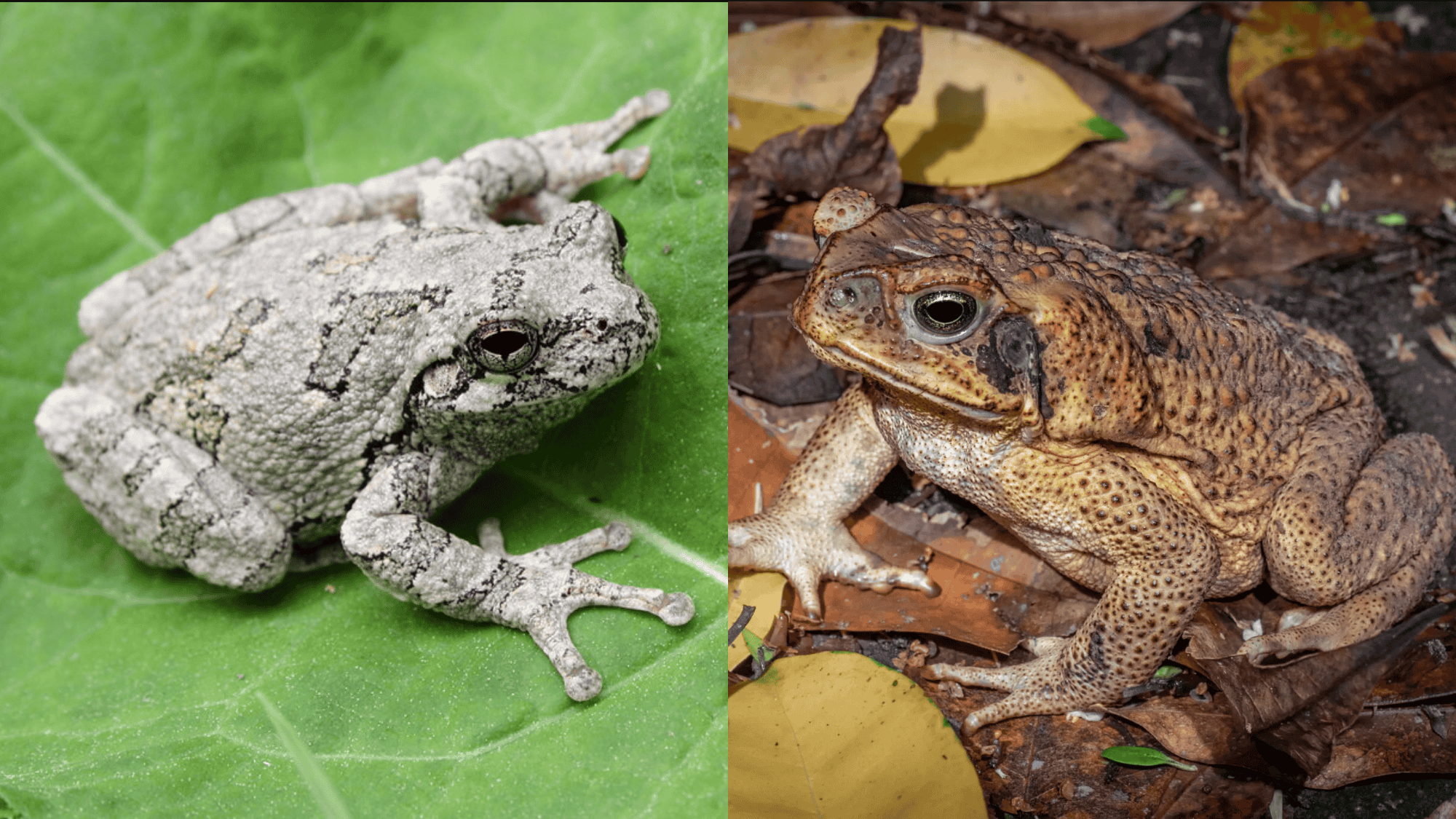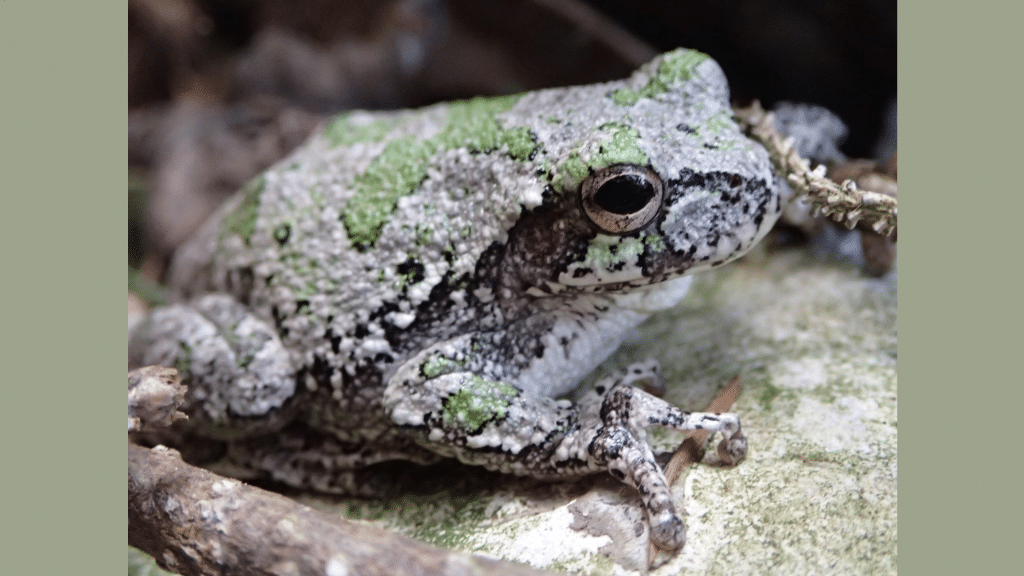Gray tree frogs are common amphibians found throughout eastern North America, known for their amazing ability to camouflage and their distinctive trilling calls.
Many homeowners, pet owners, and nature enthusiasts ask about the potential dangers these small creatures might bring.
Most of them ask questions like “Are they poisnous?”
This question is especially important for families with children and pets who may come into contact with these amphibians.
We will examine the truth about gray tree frogs and their secretions, and how they might affect humans and pets.
Scientific Classification of The Gray Tree Frog
Gray tree frogs in North America consist of two nearly identical species: Hyla versicolor, known as the Eastern Gray Tree Frog, and Hyla chrysoscelis, known as Cope’s Gray Tree Frog.
These two species are so similar in appearance that they can only be reliably distinguished by their calls or through genetic analysis.
They are found throughout the eastern United States, ranging from Florida to Maine and extending west to central Texas and Manitoba, Canada.
Physical Characteristics

Gray tree frogs have several distinctive features that help with identification:
- Size and Weight: Adults typically measure 1.5-2 inches (3.8-5 cm) in length and weigh between 5-8 grams.
- Color Variation: Despite their name, these frogs can change their color from gray to green, brown, cream, or nearly white depending on temperature, environment, and stress levels.
- Distinctive Markings: A light spot beneath each eye and a dark star-shaped pattern on their backs are common identifying features.
- Toe Pads: They possess specialized adhesive pads on their toes that allow them to cling to vertical surfaces, including glass, tree bark, and house siding.
Toxicity of Gray Tree Frogs
Here’s what you need to know about the toxicity of gray tree frogs and how it affects humans, pets, and predators alike.
1. Skin Secretions Explained
Gray tree frogs produce a mild skin secretion that serves as a defense mechanism against predators. These secretions contain mild irritants that make the frog taste unpleasant.
Low concentrations of compounds called peptides and mucus that keep the skin moist and offer some protection
These secretions are significantly less potent than those found in many tropical frog species.
The primary function of these substances is to deter potential predators and help the frog stay hydrated.
2. Risk to Humans
Gray tree frog secretions rarely cause problems. Sensitive individuals might experience minor skin irritation upon contact, but serious reactions rarely occur.
Wash with soap and water if skin contact happens. See a doctor if irritation continues. Hand washing prevents Salmonella transfer.
Accidental exposure to tiny amounts won’t seriously harm adults.
Keep frogs away from your mouth as a basic safety measure.
3. Risk to Pets
Most cats and dogs experience mouth irritation from tree frog contact, causing drooling and discomfort. Serious toxic effects remain uncommon.
Small animals like hamsters might show greater sensitivity to these secretions compared to larger pets.
If your pet comes into contact with a frog, rinse their mouth with water.
Call a vet if you notice ongoing drooling, vomiting, or strange behavior.
Gray Tree Frogs as Backyard Visitors
Gray tree frogs offer several advantages to your yard:
1. Insect Control
These frogs catch and eat hundreds of mosquitoes and other small bugs each night, helping reduce annoying pests around homes and gardens.
These amphibians target many flying insects that bother humans and damage plants. One frog can consume enough bugs to decrease local pest numbers significantly.
2. Biodiversity Indicators
Frogs signal environmental health as they quickly respond to habitat changes. Their thin skin absorbs substances from water and soil, making them early warning signs of contamination.
The number and types of frogs in an area show how well the local ecosystem functions.
When various frog species thrive, the environment often has clean water and minimal pollution.
3. Natural Pest Management
Frogs serve as biological controls in gardens and farms, limiting insect numbers without chemicals. They help maintain the right balance of different organisms in natural systems.
These helpful amphibians reduce the need for synthetic pest solutions.
By supporting frog populations, landowners can promote a self-regulating ecosystem where harmful insects don’t reach damaging levels.
Confusion with Other Species

Gray tree frogs are often mistaken for other species.
Unlike true toads, such as those in the Bufo genus, which have prominent parotoid glands that produce toxins, gray tree frogs lack these structures.
Other similar-looking frogs include spring peepers, cricket frogs, and chorus frogs, though they differ in patterns and behaviors.
It’s also worth noting that while North American toads rarely cause serious harm to humans, they can cause significant distress to pets that bite or mouth them.
Some Interesting Facts About Gray Tree Frogs
Here’s a set of unique facts about gray tree frogs that highlight just how unique these little climbers are:
- Males produce a musical trilling sound during the breeding season, with each species having a distinct rate of trill.
- Gray tree frogs can survive having up to 65% of their body water frozen solid.
- Specialized cells called chromatophores expand or contract to change the frog’s appearance.
- These frogs have sticky toe pads containing specialized cells that allow them to stick to smooth surfaces, including vertical glass.
- Gray tree frogs spend most of their time in trees and only come down to the ground during breeding season when they move to woodland ponds or pools.
Wrapping It Up
These small creatures produce mild skin secretions that do not harm people or pets.
It might cause minor irritation for some people, but it won’t create serious health issues with normal contact.
Basic hand washing after handling these frogs is all you need. Your pets might drool if they mouth one, but severe reactions are rare.
So when you spot these small amphibians in your yard, you can appreciate them without fear.
They are not a threat, but rather helpful visitors that fit naturally into your outdoor space.
Frequently Asked Questions
Are Gray Tree Frogs Dangerous to Touch?
No, they are generally safe to handle briefly. Just wash your hands afterward to avoid potential skin irritation and to protect yourself from bacteria like Salmonella that amphibians may carry.
What Should I Do if I Find a Gray Tree Frog in My House?
Gently catch it using a container and release it outside near plants or trees. They prefer wooded areas with access to water.
Are Gray Tree Frog Populations Declining?
While not currently listed as threatened, gray tree frogs face challenges from habitat loss, pollution, and climate change. Creating frog-friendly habitats can help support their populations.















